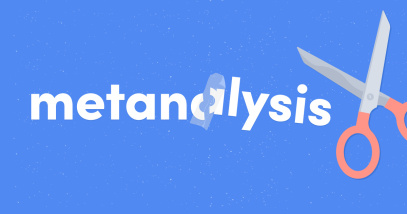Web Words

While most people associate January 1 with the new year’s arrival, some also consider it to be the “birthday” of the Internet: TCP/IP, the protocol on which the Internet operates, was adopted on this day in 1983. Since then, this technology has changed our lives, and our language, in countless ways. The subjects of this month’s Word Stories were either unheard of or had very different meanings back in 1983. Read on to find out how these words have evolved alongside the Internet itself.
meme
One of the famous “Internet words”, meme can actually be traced back to the year 1976 and to the fields of genetics, evolutionary biology and evolutionary psychology. The word was introduced by the Oxford professor and ethologist Richard Dawkins in his groundbreaking monograph The Selfish Gene.
Dawkins sought to convey “the idea of a unit of cultural transmission, or a unit of imitation”. He proposed a word based on the “suitable Greek root” mimēma, meaning “a copy or imitation”, from the Greek verb mimesthai (“to copy, imitate”)—also linked to words like mime, mimetic, and even mimosa. According to classicist conventions, this root would have formed the neologism “mimeme”, which Dawkins abbreviated to meme because he wanted “a monosyllable that sounds a bit like ‘gene’”. Given the proximity, both phonetic and conceptual, of both terms, Dawkins’ justification makes sense: genes are to biological systems what memes are to cultural habits and behaviours.
The Internet community has adopted the word to mean concepts, graphical formulas, phrases, templates, short videos, simple images and even human activities that “go viral” (another biologically inspired expression), i.e. that spread throughout the Internet. Although the connection between “ethological” memes and Internet memes has been criticized, including by Dawkins, as not being rigorous (the latter type of memes can be voluntarily created and manipulated by individuals, unlike biological memes), the difficulty of tracing the origin of many Internet memes and of controlling their dissemination works in favour of the comparison.
spam
One of the more amusing etymologies in contemporary English, that of the word spam, is also an interdisciplinary one, touching on post–World War II food, early Internet communities and television comedy. As far as is known, the word started out as the trademarked name Spam for a kind of tinned luncheon meat. It was introduced in 1937 by the Minnesota-based Hormel Food Corporation and gained worldwide success following the hardships of World War II as an inexpensive food source. In all likelihood, Spam comes from the contraction of sp(iced h)am, although Hormel officially states the following: “The real answer [to Spam’s etymological origins] is known by only a small circle of former Hormel Foods executives.”
But how did spam come to mean “unwanted, irrelevant, irksome electronic communication sent usually for the purposes of advertising”? In 1970, the British comedy group Monty Python produced an absurdist sketch titled “Spam”, in which Vikings in an English cafe chant “Spam, Spam, lovely Spam!…”, and where every dish on the menu contains Spam. More than two decades later, the term was used by early Internet users and forum participants—who were often Monty Python fans—to describe either the disruptive uploading of data performed to slow down other users’ access, or the excessive posting of unwanted electronic messages (either voluntarily or involuntarily). The ubiquity of the canned food in inexpensive British cuisine was thus associated with the similar ubiquity, and undesirability, of this new electronic phenomenon: the massive influx of unwanted information.
googol
Two idiosyncratic terms in the English lexicon of the twentieth century, googol (corresponding to the large number 10100) and googolplex (corresponding to the very large number 10googol) are for the most part devoid of real-life, let alone mathematical, applications. They have nonetheless enjoyed widespread appreciation and lasting popularity, unprecedented for two highly abstract, mathematical terms. As the story goes, the two words were coined almost simultaneously by a nine-year-old boy named Milton Sirotta, the nephew of American mathematician Edward Kasner, who had asked the boy to “think up a name for a very big number, namely, 1 with a hundred zeros after it”.
The second name googolplex, using the Latin suffix -plex found in words like complex, duplex, multiplex (and equivalent to English’s -fold in twofold, threefold, etc.), was apparently proposed by the boy the following instant and given the unorthodox definition “1, followed by writing zeros until you get tired”.
What could have been the inspiration for such spontaneous neologisms? Is googol to be treated as onomatopoeic? Should the influence of the noun and verb goggle—perhaps even the goggles that Kasner’s nine-year-old nephew routinely wore at the pool—be considered? Is Billy DeBeck’s popular comic strip Barney Google and Snuffy Smith a possibility? Given the anecdotal and far-fetched nature of the etymology reported by Kasner, the veracity and plausibility of the “official” etymologies of googol and googolplex should be considered with a dose of skepticism.
Googol and googolplex have famously been used by the founders of the American multinational technology company Google as names for the company itself and for its Californian headquarters, respectively. The spelling with -le, rather than -ol, is either a mistake or a deliberate way of differentiating the trademarked name from the mathematical term.




